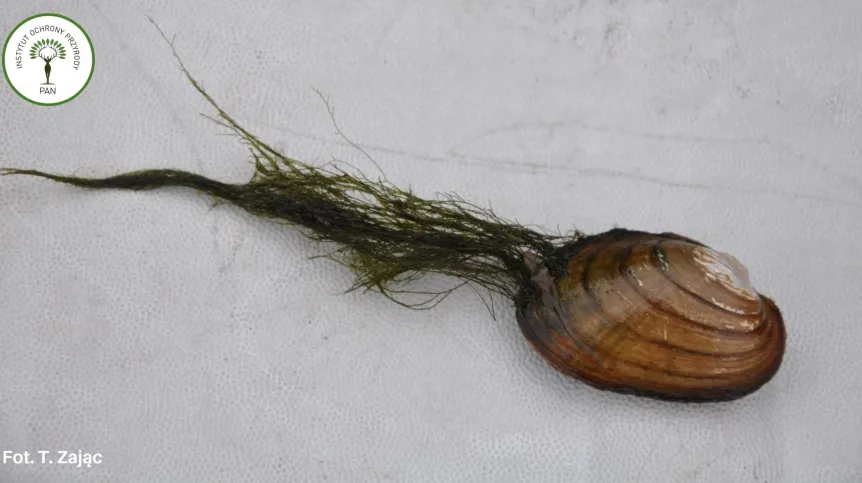
The thick shelled river mussel (Unio crassus), previously considered to be one of the species of freshwater mussels, in fact includes as many as 12 different species, an international research team involving two Polish scientists has proven.
The result of their work is the presentation of a new systematics, taxonomy and comments regarding the protection of these species.
The so-called twin species are a big problem for biologists. It turns out that the organisms, which for years were considered to be one species, actually belong to several separate species. Contrary to appearances, this knowledge gained from detailed genetic research is not purely theoretical; it also translates into practical applications, including those related to nature conservation.
This is exactly what happened with thick shelled river mussels Unio crassus. They were classified as the same species due to common morphological features, while the issue of their actual evolutionary diversity was neglected. It has now been proven that one species name includes several so-called cryptic species, i.e. species morphologically indistinguishable from other known species. This is important, the authors of the publication in the journal Molecular Phylogenetics and Evolution say, because cryptic species may not be adequately protected and their research is neglected despite their important role in the ecosystem.
This is particularly important in the case of the Unionida mussels, because the freshwater habitats they inhabit belong to the ecosystems most at risk of biodiversity loss. The mussels themselves are among the most endangered groups of animals on a global scale.
'The global decline of freshwater mussels and their crucial ecological services highlight the need to understand their phylogeny, phylogeography and patterns of genetic diversity to guide conservation efforts. Such knowledge is urgently needed for Unio crassus, a highly imperilled species', says the paper co-authored by two Polish scientists from the Institute of Nature Conservation of the Polish Academy of Sciences: Professor Katarzyna Zając and Professor Tadeusz Zając.
In their latest study, the large international team they were part of shows that the thick shelled river mussels are, in fact, 12 separate species. Some of them occur only in single locations in one river and are not covered by any special form of protection, which - according to the authors - they fully deserve. The situation is particularly dramatic in the Mediterranean, where most of such species are found and, at the same time, the threat of rivers drying up is the greatest.
Two of the newly identified cryptic species occur in Poland. According to the State Nature Monitoring estimates, there has been a clear and continuous decline of their populations in the last dozen or so years. For the study, the scientists comprehensively analysed tissue and hemolymph samples collected from 509 individuals belonging to the U. crassus complex. Importantly, they obtained the samples from 105 populations in 23 different countries.
Previous systematic and phylogenetic studies of the U. crassus complex have relied primarily on mtDNA and morphological data. No one has has used nuclear DNA to reconstruct the evolutionary history of Unio. According to the authors, only combining information from multiple nuclear and mitochondrial genes may provide a more comprehensive understanding of the evolutionary relationships.
Various groups of animals display visual resemblances until they are subjected to comprehensive analyses, including both morphological and molecular characterisation. Such similarity hinders reliable species delimitation and prevents accurate estimates of species-level diversity. These limitations may complicate taxon-based management, especially in animal groups of conservation concern. Mussels from the order Unionida have been attracting attention for years due to their great ecological importance. There are so-called indicator, umbrella and flagship species, extremely important for the restoration of aquatic ecosystems.
The taxonomic, ecological and phylogeographic information collected in the publication has very important implications for the management and protection of these animals.
'All of these species are known or expected to be highly threatened and may benefit from being studied and managed separately', the scientists say. They add that key ecological and life-history traits are unknown for most of these species and should also be studied individually, particularly those related to habitat requirements and the reproductive cycle
'Detailed species surveys are therefore urgently needed to determine the distribution, abundance, genetic diversity, and population structure of each species, as well as the range of host fish, microhabitats, behavioural traits, growth, lifespan, and reproductive periods', the scientists say. 'Populations of species living in sympatry should be assessed for potential hybridisation and how such hybridisation may affect their fitness, in particular resilience to human disturbance'.
Finally, the scientists emphasize the need for further research on anatomical features (including conchological ones) in order to identify morphological features that would enable the construction of an identification key for these species in the field. (PAP)
PAP - Science in Poland, Katarzyna Czechowicz
kap/ bar/ kap/
tr. RL













